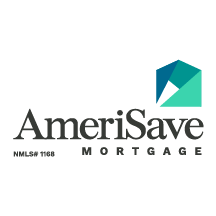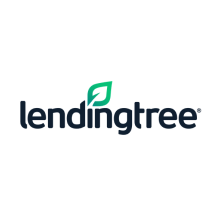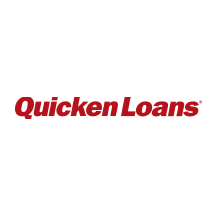We get it — you want the best mortgage because you don’t want to throw away thousands of dollars each year for the next 30 years.
The first thing you should know about mortgages is that the best type mainly depends on three things (among some others):
- Your Credit Score
- Your Down Payment
- Your Debt-to-Income Ratio
This is why the “best mortgage loan” will vary from borrower to borrower. But, assuming an average income borrower with an average credit score (710) were to seek a mortgage loan, which mortgage type would be best?
There are adjustable rate mortgages that may get you a bigger loan, but may end up increasing monthly payments if interest rates increase with economic conditions.
On the other hand, there are fixed rate mortgages that guarantee your interest rate will not rise above a certain point, but this can mean higher initial rates and monthly payments.
The point is, the best mortgage depends on you, but we can take an educated guess at which will work best if you have an average credit score and put an average amount down.
That said, let’s take a look at the best mortgage types from best to worst (riskiest).
Conventional Loan
The name of the mortgage game is payment longevity. If you can afford to pay more upfront for lower initial interest rates, that’s the strategy that will lead to greater savings down the road.
A conventional loan has higher requirements to qualify, but generally has lower interest rates which lead to lower monthly payments. Most down payments for conventional mortgage loans get as low as 3% (in 2021).
Additionally, if the borrower is able to put 20% or more down, the PMI (or Private Mortgage Insurance) will no longer be required — this can end up saving you $200-$500 in monthly PMI fees.
Once your loan to value ratio exceeds 78%, your PMI can be cancelled by refinancing. A conventional loan can also be used for investment properties or 2nd homes. FHA, VA, and USDA loans generally only allow borrowers to purchase a primary residence and can’t be used for investment purposes.
Requirements/Downsides
The higher your credit score, the better your interest rates will be. Inversely, if you don’t have a very good credit score, you may end up with pretty high interest rates with a conventional loan.
There are also some soft debt-to-income limits that you need to fit in order to qualify (this will be an important thing to ask your loan officer).
Lenders generally look for a 28% front-end DTI (debt-to-income ratio) and a 36% back-end DTI (this is called the 28/36 rule).
Interest-Only Mortgage
An interest-only mortgage is a loan that allows the borrower to only pay for interest on the loan amount each month — the interest-only payments typically last for a small portion of the total loan term (usually 5-10 years). This loan is perfect for borrowers who want a lower monthly payment initially.
This will give you, as the borrower, more time to save each month, pay down other debts, and increase your cash flow before having to pay the principal.
However, there are some obvious downsides to this loan type.
Once the interest-only period ends, you’ll begin to make both principal and interest payments, so your monthly payments will rise eventually. The interest rate for interest-only loans can be up to .125% to .375% higher than a normal loan (fixed-rate or ARM loan).
Another downside is that these loans can be very difficult to understand and even harder to predict a lifetime cost. The bottom line is that it will likely increase the lifetime cost.
The CFPB has a tool for exploring the current interest rates.
Adjustable Rate Mortgage (ARM Loan)
An Adjustable Rate Mortgage, or an ARM Loan, is a mortgage that has a variable interest rate; this means that your mortgage rate will change month to month or year to year. During the initial period of the loan, the interest rate is fixed. After those first few months, the interest rate will reset monthly or yearly.
This adjustability makes for lower initial interest rates; ARM rates are usually .250% to .500% lower APR than fixed rates. As a result, your monthly payments are also going to be lower than average for the first few months/years. Because of the lower upfront costs, borrowers will likely be able to afford better houses. The lower monthly payments also allows borrowers to stay under the maximum debt-to-income ratio, making for easier qualifying standards.
On the other hand, the variable rates make for unpredictable rate changes. This means borrowers should be pretty financially secure in order to cover the risk of rising interest rates. These loans are also more difficult to understand than conventional loans, making comparison shopping much more difficult.
FHA Loan
An FHA Loan is a loan that is insured by the US Federal Housing Administration and is only provided by FHA-approved lenders.
Because these loans are meant to help those with lower credit scores and incomes, there are many restrictions. For example, FHA mortgages cannot be used for timeshares, vacation properties, or what the FHA calls “transient occupancy” properties. It’s also very difficult to finance a secondary home with an FHA loan.
FHA Loans result in lower down payments, better interest rates, and higher debt ratios. Borrowers can normally have a lower-than-average credit score and still qualify for an FHA loan. If the borrower has a credit score greater than 580, the minimum down payment is 3.5%. However, if the borrower’s credit is below 580, the minimum down payment jumps to 10%.
Unfortunately, some sellers stay away from FHA loans. There is also a MIP (mortgage insurance premium) that borrowers will likely need to pay. This MIP is currently at 1.75% of the base loan amount (as of April 2021).
VA Loan
A VA Loan is similar to an FHA loan, in that it is meant for a specific type of borrower. This particular loan is meant to help military personnel and/or their surviving spouses get into a home with lower limits or ceilings.
Those who qualify for a VA loan will enjoy the lack of any credit score or down payment requirement (of course, you can still make a down payment to lower your interest rate). Through a VA loan, borrowers don’t have to pay Private Mortgage Insurance (PMI) either. There is no prepayment penalty, you get low interest rates, and higher debt-to-income ratios are allowed.
However, there is a VA funding fee (well worth it for all you’re getting in return). VA loan borrowers can only purchase a primary residence with the funding. Also, VA loan do add a few extra days to close on your desired property.
A VA loan is restricted to active duty, reservists, military veterans, or their surviving, unmarried spouses.
USDA Loan
The USDA loan program is also known as the USDA Rural Development Guaranteed Housing Loan Program. It offers mortgage loans to property owners and borrowers in rural areas and is made available by the U.S. Department of Agriculture.
Borrowers of a USDA loan have no down payment requirements, no prepayment penalties, and finance closing costs go straight into the loan. Additionally, the more flexible credit limits allow for lower fixed interest rates.
There are many geographical restrictions and limitations to qualify for a USDA loan. There are also certain income and housing limits. Borrowers will also have to pay for Private Mortgage Insurance (PMI).
In the end, you’ll want to work closely with your assigned loan officer to explore the different options available to you.
For our purposes today, the best type of mortgage for average borrowers is a conventional loan, because it has the least drastic drawbacks and entails a consistently low interest rate.


